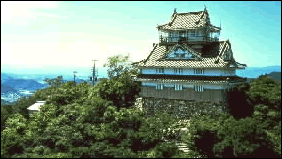本文
Facts about Gifu Prefecture
History of Gifu

In July 1871, the Japanese national government established
a prefectural system amalgamating all of Japan's former provinces into prefectures. Nine prefectures in the Mino District and one in the Hida District (Takayama Prefecture) were established on the land which composes present-day Gifu.
The nine prefectures in Mino unified to become Gifu, and Takayama initially joined Chikuma Prefecture (modern Nagano Prefecture) in November 1871. Takayama Prefecture was separated from Chikuma Prefecture to become part of Gifu Prefecture in 1876. In 2005, Yamaguchi Village in Nagano Prefecture was incorporated into Gifu, resulting in the formation of Gifu Prefecture as it is today.Municipalities in Gifu Prefecture merged to form larger districts during the Meiji and Showa period. In 1889, there were 948 municipalities, but this decreased to 106 in 1960. Gifu Prefecture currently comprises 21 cities, 19 towns and 2 villages, totaling to 42 municipalities.
Geography and Population of Gifu

Gifu is located almost in the center of Japan. It has an area of about 10,621 square kilometers, and is ranked 7th in the country in size. Gifu is one of Japan's few landlocked prefectures, and is surrounded by 7 other prefectures.
According to the latest Population Census, as of October 1, 2010, the population of Gifu stands at 2,080,773 (1,006,247 males and 1,074,526 females). This accounts for about 1.6% of Japan's entire population, and it is 17th most populous prefecture in the country. The number of people aged 65 or older is 499,399, which makes up 24.1% of the total population of the prefecture. The national figure in this age group is 23.0%.
The Topography and Climate of Gifu

Gifu is endowed with rich natural environments. In the Hida Region, located in northern Gifu, the mountain peaks exceed 3,000 meters above sea level. This mountain range includes Mt. Ontake, Mt. Norikura, and Mt. Okuhotaka. In contrast, in the Mino Region, situated in southern Gifu, the Kiso Sansen(the Kiso, Nagara, and Ibi Rivers) flow into the Nobi Plain. In particular, the clear stream of the middle reaches of the Nagara River is selected as one of the 100 best bodies of water in Japan.Blessed with bountiful natural surroundings, Gifu has been long known as the prefecture of "Hizan Nosui," which translates as Hida's mountains and Mino's waters.With plains that lie at sea level and the Hida Mountains that extend above 3,000 meters in height, the significant variation in altitude found in Gifu makes for a large difference in climate. The average temperature of Gifu City is 15.5 degrees Celsius, whereas that of Takayama City, located in the north, is 10.6 degrees.As a result of this diverse topography and climate, Gifu is inhabited by a variety of animal and plant species.
Industries in Gifu
A large variety of agricultural products, which are suited to the natural conditions of each region, are grown all year round throughout Gifu Prefecture. Rice is cultivated due to the warm climate in the plains of southwestern Gifu. Vegetables, including kashu (summer and fall) tomatoes, spinach, and natsu daikon (summer Japanese radish), are produced in the cooler summer climates of the high altitude plateaus in the Chuno, Tono, and Hida Regions (central, eastern and northern regions of Gifu). Beef and dairy cattle are raised on the mountains.Fisheries in Gifu are focused on both river fishing, the key product of which is ayu (sweetfish), as well as aquaculture, which cultivates rainbow trout and amago (red spotted masu trout).Manufacturing has been thriving in Gifu for a long period of its history, and has been the key industry of the prefecture. The number of employees involved in manufacturing accounts for 24.1% of all industries in the prefecture, compared to the national figure of 16.1%. This high proportion of employees ranks 5th in Japan. Fashion, ceramics, furniture, woodwork, cutlery, paper, plastics, and foodstuffs are among the distinctive local industries found in Gifu.
(Updated in February 2013)


